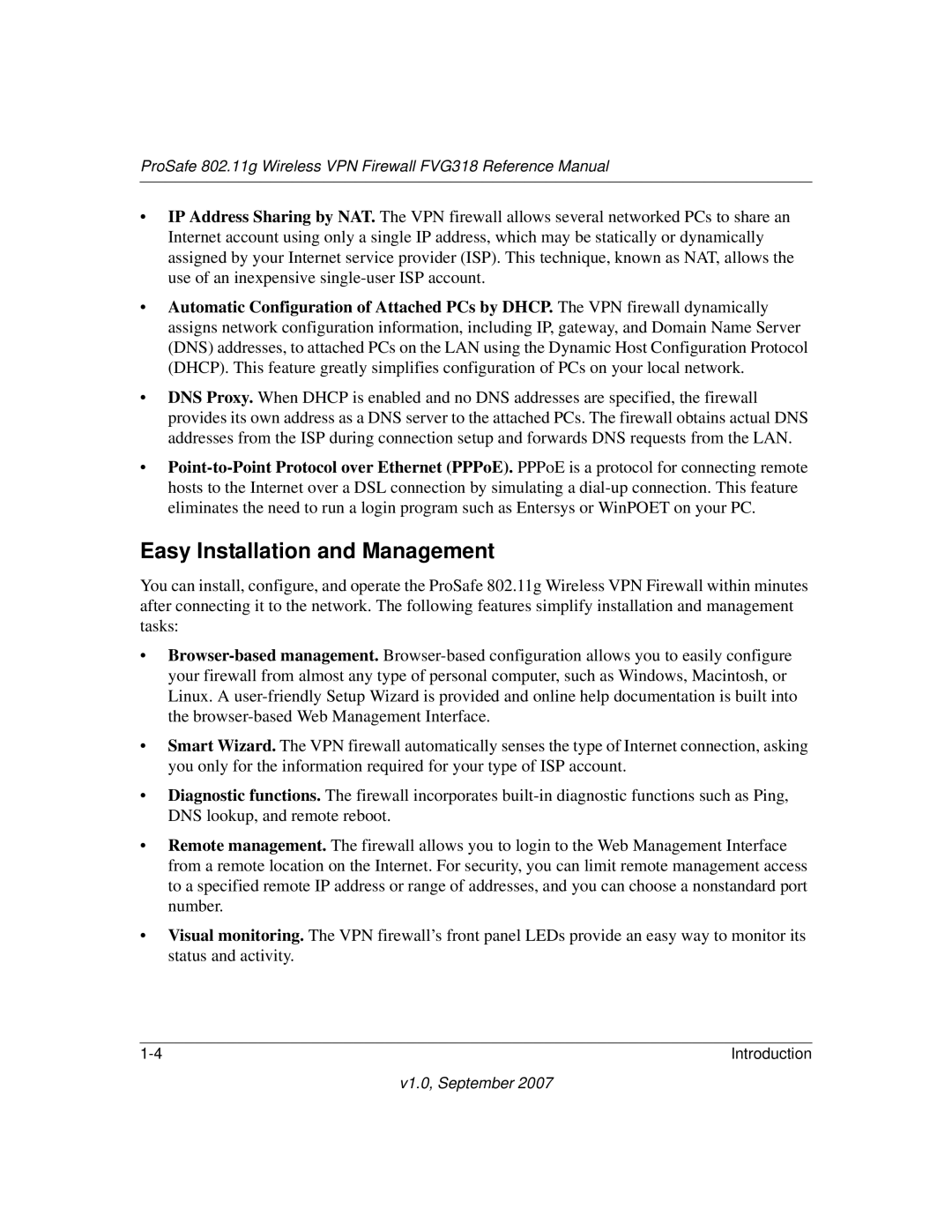ProSafe 802.11g Wireless VPN Firewall FVG318 Reference Manual
•IP Address Sharing by NAT. The VPN firewall allows several networked PCs to share an Internet account using only a single IP address, which may be statically or dynamically assigned by your Internet service provider (ISP). This technique, known as NAT, allows the use of an inexpensive
•Automatic Configuration of Attached PCs by DHCP. The VPN firewall dynamically assigns network configuration information, including IP, gateway, and Domain Name Server (DNS) addresses, to attached PCs on the LAN using the Dynamic Host Configuration Protocol (DHCP). This feature greatly simplifies configuration of PCs on your local network.
•DNS Proxy. When DHCP is enabled and no DNS addresses are specified, the firewall provides its own address as a DNS server to the attached PCs. The firewall obtains actual DNS addresses from the ISP during connection setup and forwards DNS requests from the LAN.
•
Easy Installation and Management
You can install, configure, and operate the ProSafe 802.11g Wireless VPN Firewall within minutes after connecting it to the network. The following features simplify installation and management tasks:
•
•Smart Wizard. The VPN firewall automatically senses the type of Internet connection, asking you only for the information required for your type of ISP account.
•Diagnostic functions. The firewall incorporates
•Remote management. The firewall allows you to login to the Web Management Interface from a remote location on the Internet. For security, you can limit remote management access to a specified remote IP address or range of addresses, and you can choose a nonstandard port number.
•Visual monitoring. The VPN firewall’s front panel LEDs provide an easy way to monitor its status and activity.
Introduction |
v1.0, September 2007
